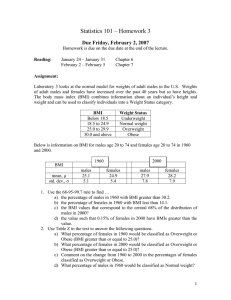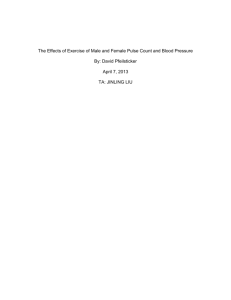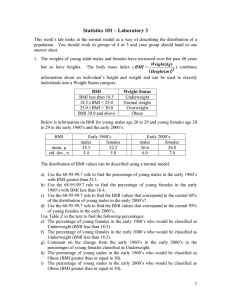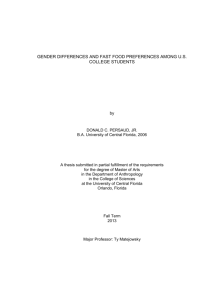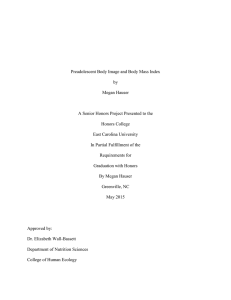GENDER DIFFERENCES IN EXERCISE TESTING
advertisement
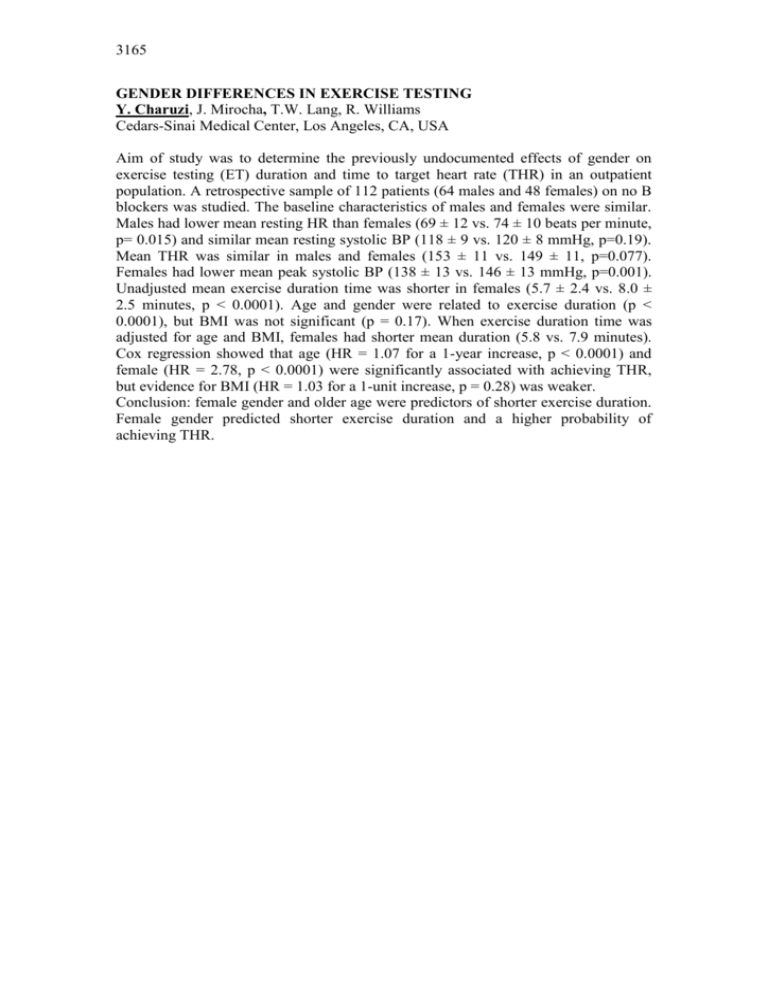
3165 GENDER DIFFERENCES IN EXERCISE TESTING Y. Charuzi, J. Mirocha, T.W. Lang, R. Williams Cedars-Sinai Medical Center, Los Angeles, CA, USA Aim of study was to determine the previously undocumented effects of gender on exercise testing (ET) duration and time to target heart rate (THR) in an outpatient population. A retrospective sample of 112 patients (64 males and 48 females) on no B blockers was studied. The baseline characteristics of males and females were similar. Males had lower mean resting HR than females (69 ± 12 vs. 74 ± 10 beats per minute, p= 0.015) and similar mean resting systolic BP (118 ± 9 vs. 120 ± 8 mmHg, p=0.19). Mean THR was similar in males and females (153 ± 11 vs. 149 ± 11, p=0.077). Females had lower mean peak systolic BP (138 ± 13 vs. 146 ± 13 mmHg, p=0.001). Unadjusted mean exercise duration time was shorter in females (5.7 ± 2.4 vs. 8.0 ± 2.5 minutes, p < 0.0001). Age and gender were related to exercise duration (p < 0.0001), but BMI was not significant (p = 0.17). When exercise duration time was adjusted for age and BMI, females had shorter mean duration (5.8 vs. 7.9 minutes). Cox regression showed that age (HR = 1.07 for a 1-year increase, p < 0.0001) and female (HR = 2.78, p < 0.0001) were significantly associated with achieving THR, but evidence for BMI (HR = 1.03 for a 1-unit increase, p = 0.28) was weaker. Conclusion: female gender and older age were predictors of shorter exercise duration. Female gender predicted shorter exercise duration and a higher probability of achieving THR.







